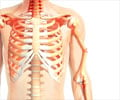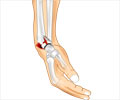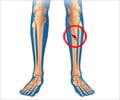Higher levels of anxiety are linked to an increased risk of bone fractures in postmenopausal women, found research.

‘Higher levels of anxiety are linked to an increased risk of bone fractures in postmenopausal women.’





Of the 192 postmenopausal women recruited to the study, those with the lowest levels of anxiety showed a lower probability of fracture than did the women with higher anxiety scores. In addition, anxiety levels were significantly related to age, menopause age, years since menopause, and depressive symptoms. "Osteoporosis, which affects mortality and quality of life, is on the rise," says Dr. JoAnn Pinkerton, NAMS executive director. "In addition to previously known risk factors such as early menopause, cigarette smoking, and certain medications such as steroids, this study suggests that women with anxiety need to be screened for osteoporosis because of their higher risk of low bone density, which is associated with higher osteoporotic fracture risk." "
Source-Eurekalert















